Getting a Feel for Haptics
One of tech’s main goals is to improve our lives and make them all the more comfortable, from the machine learning algorithms that optimize our lives to the breakthroughs in human longevity. Our progress isn’t showing any signs of stopping either.
There is one field in particular that I’m quite keen on discussing that will make our education more interactive, VR games more immersive, and remote surgery robots more advanced. To give you a sense of where these incredible advances will come from, let me tell you a thing or two about haptics.
Haptic systems grant us the ability to physically interact with virtual environments by taking advantage of how we perceive the sense of touch. Haptics enables us to interface with computer-generated spaces with strategically placed and engineered haptic systems that apply forces, vibrations and heat to the user. But what is haptics, exactly, and how can they make use feel like we’re being bitten by the bizarrely mutated 4-winged pigeon known as the Microraptor at a Jurassic petting zoo?

Our sense of touch is something we usually take for granted. Although we may not realize it, we interact with some sort of haptic device nearly every day through our smartphones and gaming systems. The word itself, haptics, comes from the Greek word haptikos, meaning “able to come into contact with.”
Haptic systems let us physically interact with the digital world through recreating a sense of touch by applying vibrations and forces of varying strengths and intensity. This is also known as kinaesthetic communication. We can sense the shape, weight, texture, and even temperature of virtual objects through tactile and kinaesthetic sensations.
With haptics, we need to take into consideration both the human and machine aspects of the technology. Both of these consist of three main parts:
- the sensory components
- the processing components
- the mechanical and motor components
Regarding the machine half, the sensory components would contain things such as touchscreens, buttons and pressure sensors, things the human half would use to interact with the machine aspect. The processing unit would then be in charge of converting and delivering the input from the sensory elements to the mechanical and motor components. The mechanical components include actuators, motors, pneumatics etc. which would then serve to deliver physical sensations like vibrations to the human.
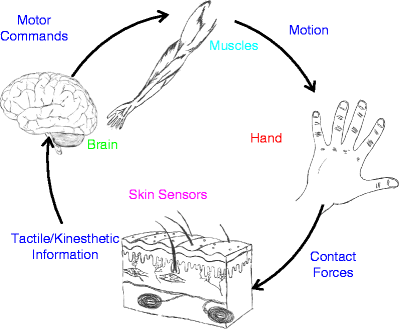
The sensory component of the human aspect is our nervous system. This mechanism consists of the consistency of countless receptors and sends electrical signals to the brain whenever activated by a physical stimulus. Our processing unit is, as you’ve probably guessed, none other than our brains. The brain perceives and analyses the conveyed information sent from our sensory component, and in turn, it sends signals of its own, activating the motor components. In our case, the human system’s mechanical aspect would be our body, bringing the two halves of the haptic system full circle.
The Biology Behind Haptics
What is touch, and how can we even describe how we sense it? Our haptic sense consists of mechanical sensors that can detect and react to physical forces on our skin and even on our joints and muscles. As mentioned before, whenever these tactile receptors on our skin are stimulated (squeezed, rubbed, etc.), they cause an electrical nerve to be generated. These signals would then make their way to the brain to be processed.
After putting all the information from the receptors together, your brain generates what I like to call the “touch picture.” This picture’s imagery would consist of elements such as cold or hot, dry or moist, smooth or rough, and hard and soft.
Our haptic sensors can be broadly split up into three basic categories:
- Nociceptors
- Thermoreceptors
- Mechanoreceptors
All of these receptors are tactile units, each specialized for sensing different things.
Nociceptors are responsible for reacting to pain. They react to physical damages, like being bitten by a Microraptor, by sending signals to our spinal cord and then to our brain, resulting in the sensation of pain. Thermoreceptors, as their name suggests, lets us sense changes in temperature. Thermoreceptors can also be broken down even more into receptors that specialize in detecting warmth and coldness. The cold thermoreceptors are about three and a half times more common than their hot counterparts.
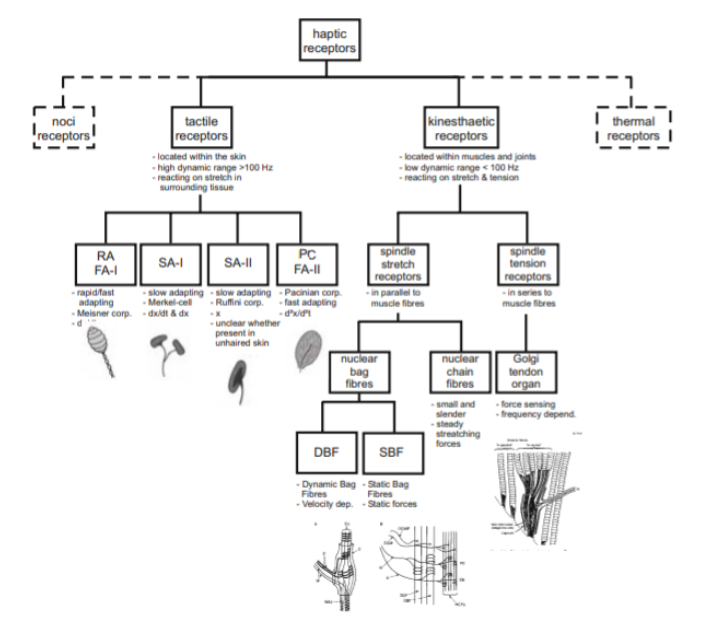
Then there are the mechanoreceptors, the haptic sensors that haptic technologies take advantage of the most. Mechanoreceptors can be categorized into two categories, tactile and kinaesthetic.
Your body’s tactile sensors can be found in clusters in the skin’s outer areas like your fingertips and react to stimuli like strains. The kinaesthetic sensors are located in muscles, joints, and tendons and contribute to your weight and stretch perception.
Now that I’ve gone over most of the biological nitty-gritty, it’s time to look at the different types of haptic feedback.
Haptics’ Different Sensory Channels
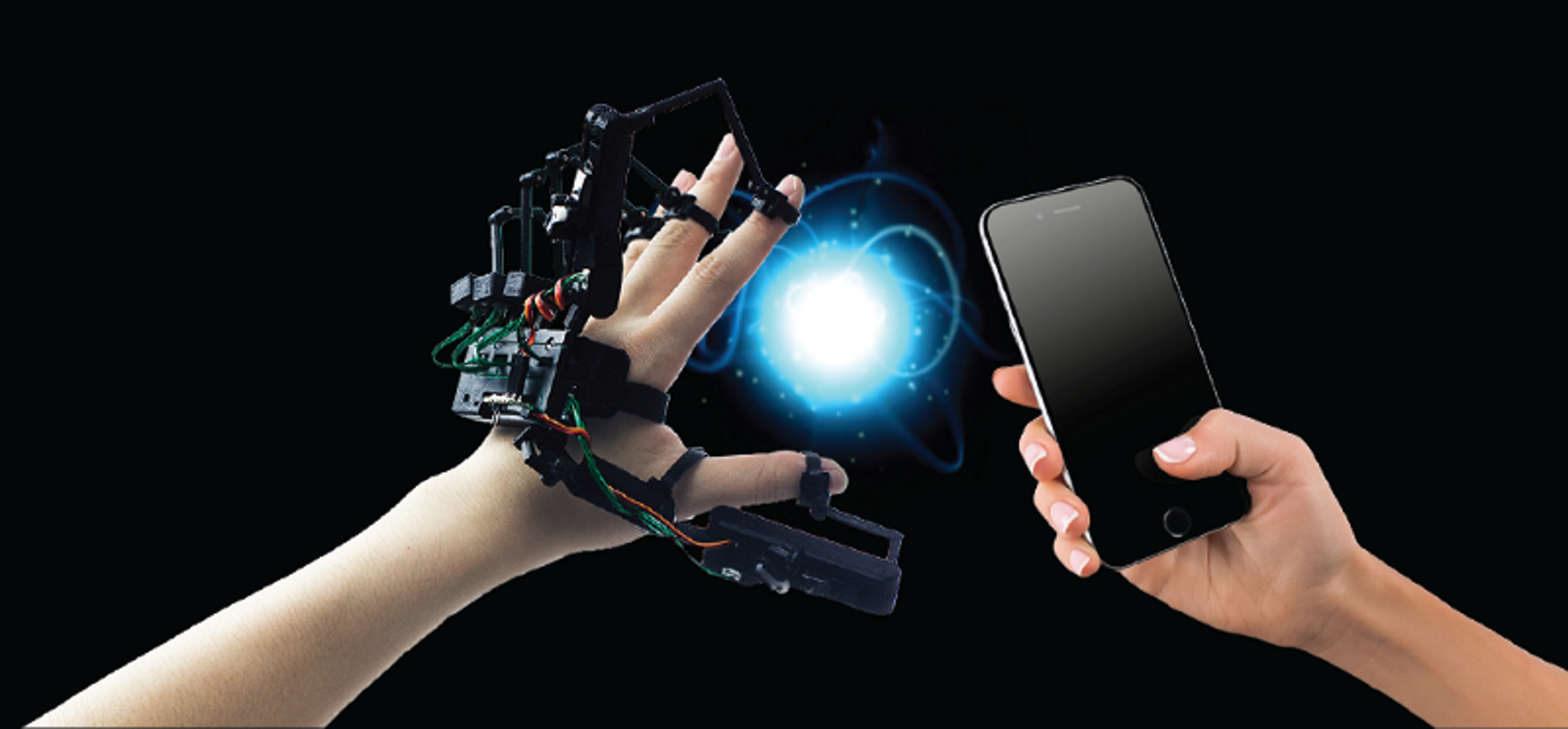
There are three main sensory channels for haptic feedback that allow us to experience different tactile sensations.
- Tactile feedback
- Vibrotactile feedback
- Thermal feedback
Tactile Feedback
Tactile feedback is an essential sensory channel when it comes to haptics. This is because it provides our brains with information regarding an object’s shape, surface, texture, weight, and size. Remember how our tactile receptors help our brains create a touch picture? Well, sticking with the same analogy, tactile feedback devices can be thought of as the pixels that help us generate these touch pictures. In this case, the pixel grid is an array of different actuators that apply a force on your skin.
Like the pixels on the screen you’re reading this on, this system of actuators can create different touch pictures either by changing the amount of force each actuator applies or through which ones are activated.
Vibrotactile Feedback
If you have a smartphone, then chances are you’ve already experienced vibrotactile haptic feedback. Every time you receive a notification and your phone buzzes or whenever you’re immersed in a video game and your controller starts vibrating, you’re experiencing vibrotactile feedback.
The Pacinian Corpuscle is what allows us to feel all these vibrations in the first place. They have a much larger receptive field than the receptors in charge of detecting tactile stimuli. Unlike tactile feedback systems, vibrotactile systems don’t need as many actuators to create a rich feeling.
Thermal Feedback
Let’s start to heat things up a little. Heat is something that most people don’t think about when they think about haptics. In fact, this can be quite crucial, especially if you’re aiming to make VR as immersive as possible.
One of the most critical aspects you’d need to consider when working with thermal feedback would be how you transfer heat from the device to the user. There are three main ways to accomplish this, and each of them is good for different circumstances:
- Conduction
- Radiation
- Convection

Conduction is how heat transfers from one object to another when they are in direct contact. For example, if someone were to snuggle up under a heated blanket, the heat from the blanket’s heating pads would be transferred to my body through conduction. Radiation is responsible for the heat you feel from a fire, as it’s the transfer of heat through electromagnetic radiation.
Lastly, convection is how heat transfers through moving fluids, like air. Convection is significant for modelling things like feeling the warmth of a fireplace or the frigid winds of the Arctic. Like tactile feedback systems, thermal feedback systems also take advantage of a grid of actuators that are either in direct contact with the skin or are at a distance.
Now, you might be thinking to yourself, does haptics have any comprehensive applications other than making your phone. The answer; you bet there are.
Our sense of touch just so happens to be our only sense with its sensors spread out all across our bodies. Thus, several different haptic systems have been created to take advantage of this, which can be used in all sorts of different ways.
In Medicine
In medical professions, a strong theoretical understanding of knowledge is crucial, and they need to know a lot of things. Despite its importance, theoretical knowledge is only one half of the puzzle to developing a complete, in-depth understanding of a topic; you would also require a solid foundation that can only be developed through hands-on learning and experience.
Companies such as FundamentalVR use haptic systems in tandem with virtual reality to give their practicing doctors almost entirely realistic virtual training. This isn’t just like Surgeon Simulator, though, as these training simulations also introduce the sense of touch.
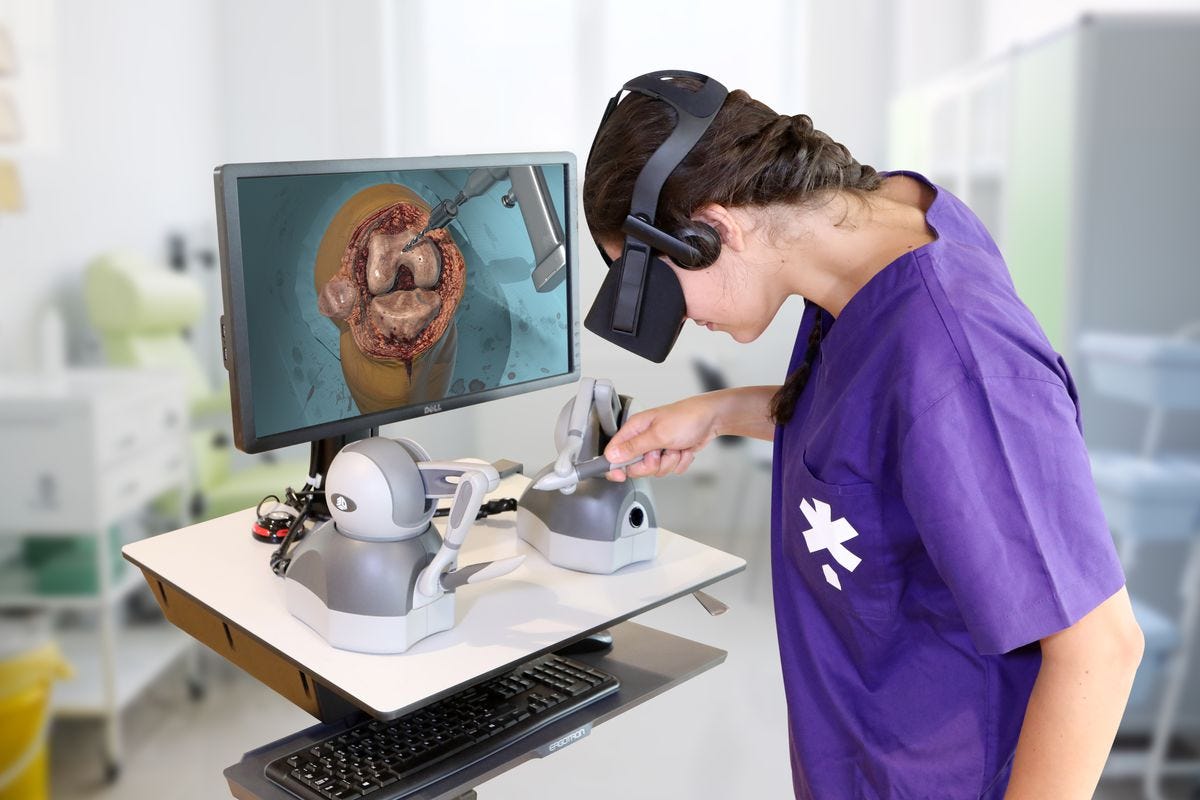
This allows for other super intuitive and comprehensive simulations that can help doctors develop a stronger sense of muscle memory.
The impact and benefit of haptic technologies in this field can be seen mostly in re-sensory therapy, which comes in handy when treating recovering stroke patients.
About 85% of stroke patients have experienced some kind of sensory impairment, and to help them regain some of their sensory function, certain institutions are turning to haptics, VR, and robotics. For example, haptic rehabilitation robots, such as BURT, provide active visual, auditory, proprioceptive, and vibration feedback, helping stroke patients with their treatment and therapy.
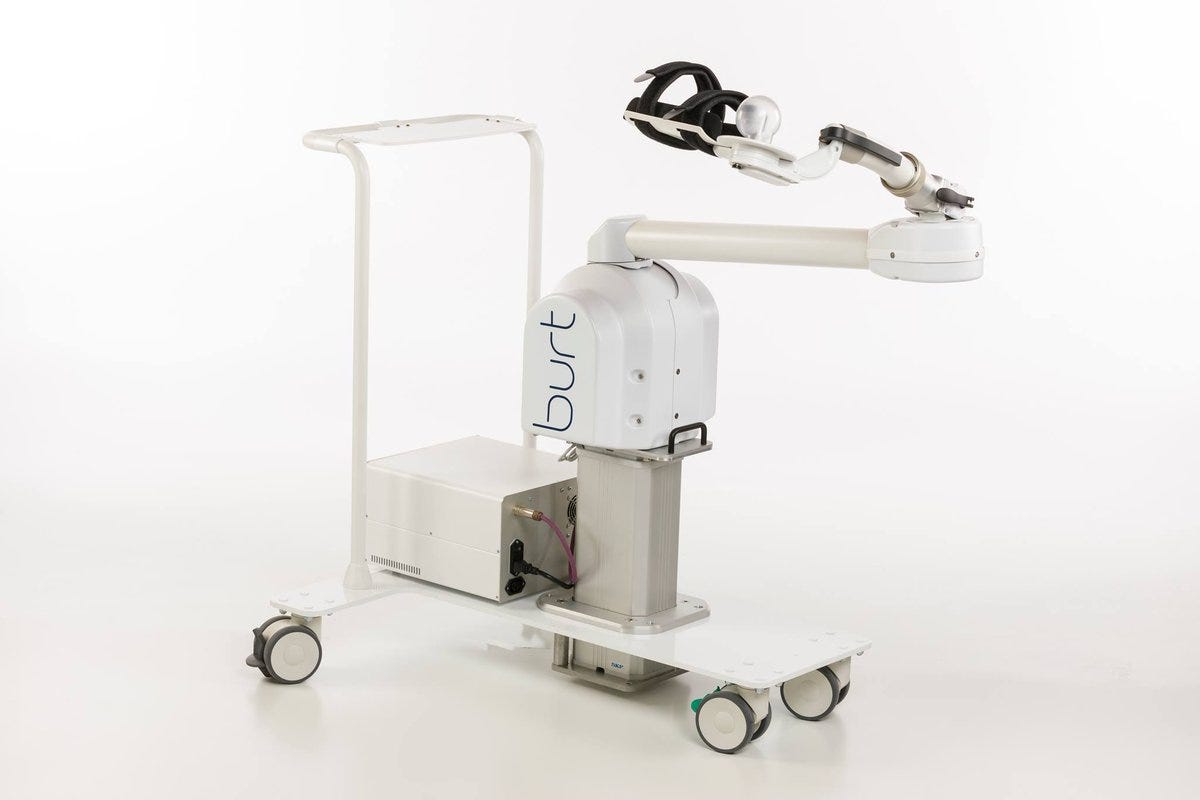
In Education
Whenever you read something, you only retain 10% of the information. When you listen to information, you retain about 26%. When you watch something, you retain 30% and when you combine seeing and listening, you retain 50%. But what about when you throw touch into the equation?
As previously mentioned, gaining a theoretical understanding of a subject can only get you so far. You also need to put your learning into practice to further your education as well — this where haptics can come in handy.
They can be used in physics to help illustrate difficult and abstract concepts while also making fundamental principles easier to understand. By introducing haptics, students can be kept actively involved in the learning process since they feel the forces they’re learning about.
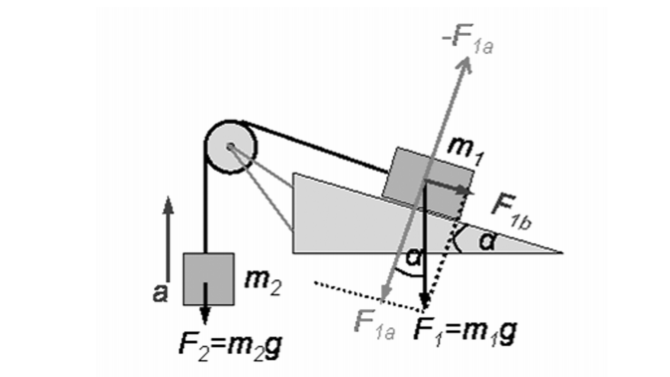
Visuo-haptic systems could also have a role to play in chemistry too. Haptics can help simulate forces at a molecular level as well as to illustrate these intermolecular forces better.
In engineering disciplines, tactile haptic interfaces can better model all of the different forces and interactions at play in complex systems.
Lastly, haptics, along with the help of virtual reality, can help us develop a better understanding of what life was like for ancient civilizations through immersive simulations. They could even let us interact with ancient artifacts in a virtual museum.
With Virtual Reality
I’ve mentioned virtual reality a couple of times in this article now, but what else can you do when you put VR and haptics together?
Currently, with VR systems, users can only experience audible and visual stimuli. The one thing missing to make VR a completely immersive experience is a sense of touch.
Enter haptics.
Haptic technology and VR can be used in VR gaming; however, VR controllers limit the use of your hands since they’re one-handed gaming controllers. However, professional virtual reality users need to be able to utilize the full dexterity of both of their hands. This is why companies such as HaptX are working on innovating technology like the HaptX Gloves, which let you bring your real hands to VR.
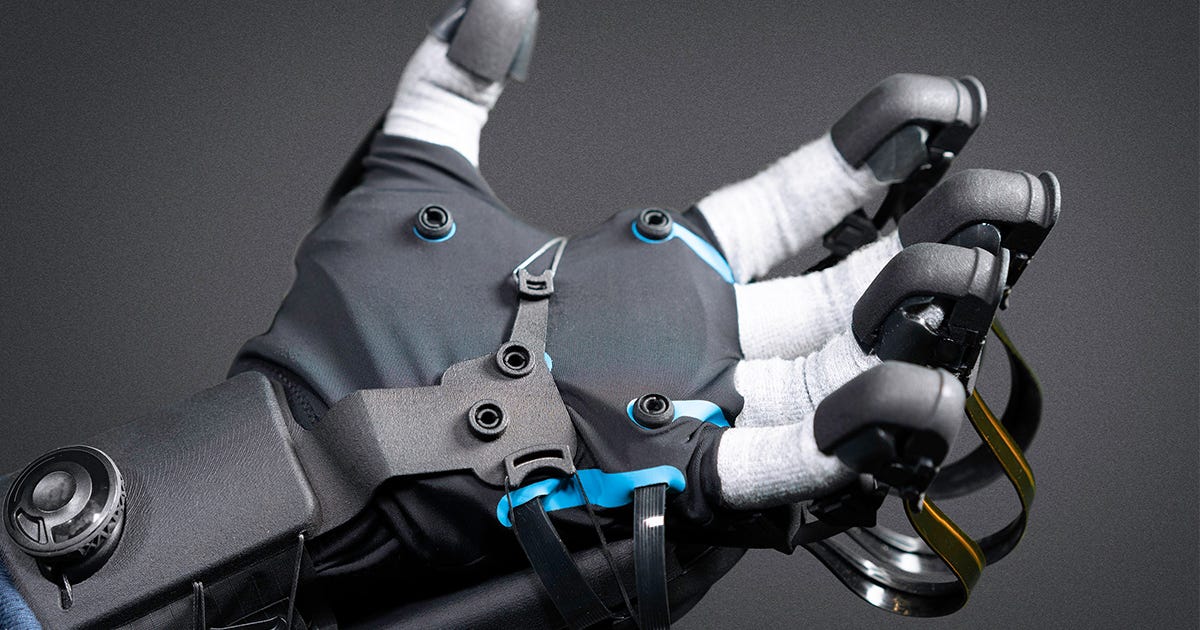
The field of haptics continues to grow and develop by the second, so these applications don’t even begin to scratch the surface of what haptics can do.
Our sense of touch is by far the most underrated and one that we seriously take for granted. Once we start to focus in on how we can fully take advantage of this sense, we’ll soon be able to unlock a whole new world, invigorating our sense of wonder.
TL;DR
- Haptic systems let us physically interact with the digital world through recreating creating a sense of touch by applying vibrations and forces of varying strengths and intensity
- Our haptic sense consists of a group of mechanical sensors that can detect and react to physical forces on our skin, and even on our joints and muscles
- Haptic technologies have many diverse applications from education, entertainment, to the medical sciences













